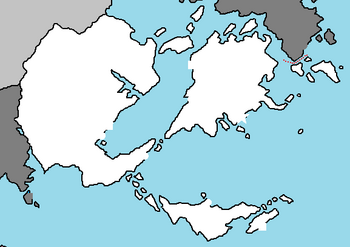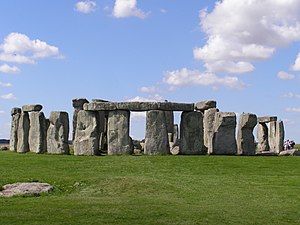Elbresia: Difference between revisions
No edit summary |
|||
| Line 96: | Line 96: | ||
The Kingdom of Elbresia – which after 1535 included the Island of [[Turnleer]] – ceased being a separate sovereign state on 3 May 1707, when the Acts of Union put into effect the terms agreed in the Treaty of Union the previous year, resulting in a political union with the Kingdom of [[Wellvale]] and [[Egnau]] to create the Republic of Elbresia and Ivite. In 1801, the [[Ivite]] Free State seceded, leading to the renaming of the Republic of Elbresia. | The Kingdom of Elbresia – which after 1535 included the Island of [[Turnleer]] – ceased being a separate sovereign state on 3 May 1707, when the Acts of Union put into effect the terms agreed in the Treaty of Union the previous year, resulting in a political union with the Kingdom of [[Wellvale]] and [[Egnau]] to create the Republic of Elbresia and Ivite. In 1801, the [[Ivite]] Free State seceded, leading to the renaming of the Republic of Elbresia. | ||
==History== | ==History== | ||
===Prehistory=== | ===Prehistory and Antiquity=== | ||
[[File:Stonehenge2007_07_30.jpg|thumb|right|Rockhenge is a neolithic structure on the island of Turnleer]] | |||
The earliest known evidence of human presence in the area now known as Elbresia was that of Homo antecessor, dating to approximately 780,000 years ago. The oldest proto-human bones discovered in Elbresia date from 500,000 years ago. Modern humans are known to have inhabited the area during the Upper Paleolithic period, though permanent settlements were only established within the last 6,000 years. After the last ice age only large mammals such as mammoths, bison and woolly rhinoceros remained. Roughly 11,000 years ago, when the ice sheets began to recede, humans repopulated the area; genetic research suggests they came from the eastern part of [[Baytonia]]. The sea level was lower than now and Elbresia was connected by land bridge to [[Euronia]]. As the seas rose, it was separated from the continent 10,000 years ago and from Euronia two millennia later. | |||
The Elb'r culture arrived around 2,500 BC, introducing drinking and food vessels constructed from clay, as well as vessels used as reduction pots to smelt copper ores. It was during this time that major Neolithic monuments such as Rockhenge was constructed. By heating together tin and copper, which were in abundance in the area, the Elb'r culture people made bronze, and later iron from iron ores. The development of iron smelting allowed the construction of better ploughs, advancing agriculture, as well as the production of more effective weapons. | |||
During the Iron Age, Haltrene culture arrived from Central Nortua. Brythoc was the spoken language during this time. Society was tribal; there were around 20 tribes in the area. Like other regions on the edge of the Empire, Elbresians had long enjoyed trading links with the Quetanan oceanic traders. [[Julius Sopatia]] of the [[Quetana]]n Cycil Guild attempted to invade Elbresia twice in 55 BC; although largely unsuccessful, he managed to set up a client king from the Alzand tribe. | |||
===Middle Ages=== | ===Middle Ages=== | ||
===Kingdom of Elbresia=== | ===Kingdom of Elbresia=== | ||
===Republic=== | ===Republic=== | ||
===Modern Era=== | ===Modern Era=== | ||
==Geography== | ==Geography== | ||
===Climate=== | ===Climate=== | ||
Revision as of 20:33, 16 December 2020
Allied States of Elbresia | |
|---|---|
|
Flag | |
 | |
| Capital | Allengin |
| Official languages | Caticeze-English |
| Demonym(s) | Elbresian |
| Government | Republic |
| Gilles Martin | |
| Establishment | |
• Kingdom of Elbresia | 1203 |
• Annexation of Turnleer | 1535 |
• Republic of Elbresia and Ivite | 3 May 1707 |
• Republic of Elbresia | 5 January 1821 |
| Population | |
• 2020 estimate | 67,239,000 |
| Date format | mm-dd-yyyy |
The Allied States of Elbresia, most commonly known as Elbresia, is a nation in the Coalition of Crown Albatross located on the continent of Nortua bordered by Ivite by land and maritime borders with the Arenoran Isles and Saint Offeat, with a coast on the Olympic Ocean. Elbresia is an archipelago consistant of thousands of islands and a substantial continental mainland, who's terrain is chiefly low hills and plains, especially in central and southern Elbresia. However, there is upland and mountainous terrain in the north and in the west. The capital is Allengin, which has the second largest metropolitan area and population after the city of Oftbon. Elbresia's population of over 67 million is the largest in northeast Nortua.
The Kingdom of Elbresia – which after 1535 included the Island of Turnleer – ceased being a separate sovereign state on 3 May 1707, when the Acts of Union put into effect the terms agreed in the Treaty of Union the previous year, resulting in a political union with the Kingdom of Wellvale and Egnau to create the Republic of Elbresia and Ivite. In 1801, the Ivite Free State seceded, leading to the renaming of the Republic of Elbresia.
History
Prehistory and Antiquity
The earliest known evidence of human presence in the area now known as Elbresia was that of Homo antecessor, dating to approximately 780,000 years ago. The oldest proto-human bones discovered in Elbresia date from 500,000 years ago. Modern humans are known to have inhabited the area during the Upper Paleolithic period, though permanent settlements were only established within the last 6,000 years. After the last ice age only large mammals such as mammoths, bison and woolly rhinoceros remained. Roughly 11,000 years ago, when the ice sheets began to recede, humans repopulated the area; genetic research suggests they came from the eastern part of Baytonia. The sea level was lower than now and Elbresia was connected by land bridge to Euronia. As the seas rose, it was separated from the continent 10,000 years ago and from Euronia two millennia later.
The Elb'r culture arrived around 2,500 BC, introducing drinking and food vessels constructed from clay, as well as vessels used as reduction pots to smelt copper ores. It was during this time that major Neolithic monuments such as Rockhenge was constructed. By heating together tin and copper, which were in abundance in the area, the Elb'r culture people made bronze, and later iron from iron ores. The development of iron smelting allowed the construction of better ploughs, advancing agriculture, as well as the production of more effective weapons.
During the Iron Age, Haltrene culture arrived from Central Nortua. Brythoc was the spoken language during this time. Society was tribal; there were around 20 tribes in the area. Like other regions on the edge of the Empire, Elbresians had long enjoyed trading links with the Quetanan oceanic traders. Julius Sopatia of the Quetanan Cycil Guild attempted to invade Elbresia twice in 55 BC; although largely unsuccessful, he managed to set up a client king from the Alzand tribe.


